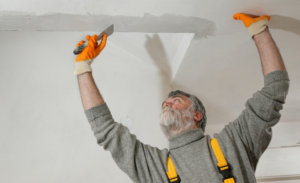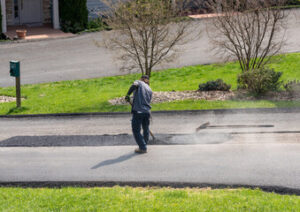Chiropractors are allied health professionals that offer treatment for conditions affecting the bones and muscles. They use therapies such as spinal manipulation and massage to relieve pain and treat musculoskeletal disorders.

Many chiropractors avoid the use of drugs. They believe that the spine is a vital organ that should be stimulated to increase its overall health. For professional help, contact Westside Chiropractic Center.
Chiropractic adjustments are a mainstay of treatment for many patients. They help the body to realign joints, decrease pain and muscle tightness, improve spinal movement and mobility, and relieve numbness, tingling, and weakness associated with slipped or pinched discs. These misalignments can result from a single traumatic event such as a car accident or fall; or from repetitive stresses like poor spinal posture while working at a desk job for long periods of time.
During a spinal adjustment, a chiropractor applies a quick, low-amplitude thrust to the stuck or misaligned joint. This motion can break down scar tissue within the joint capsule and surrounding soft tissues, enabling more fluid spinal motion. It is often accompanied by a popping sound, which is called joint cavitation and occurs as a result of the sudden change in pressure that creates a release of nitrogen gas within the joint capsule. The release of this pressure brings an immediate feeling of pain relief, while also improving spinal movement and mobility in the area of the joint that was adjusted.
While a chiropractic adjustment is not typically painful, the patient may experience soreness or stiffness for a day or two afterward. This soreness can be alleviated with ice, rest, and massage treatments or a combination of these. Occasionally, spinal manipulation can worsen herniated or slipped discs or cause other complications such as headaches. Therefore, it is important that a patient obtains clearance from their medical doctor before seeking treatment from a chiropractor.
There are several different techniques for delivering spinal manipulation, including Gonstead, Diversified, Thompson Terminal Point Technique, and Activator methods. While there is an art to determining when and how much force to apply during high velocity, low-amplitude spinal manipulation, there is no doubt that these techniques can provide tremendous benefits to the patients of a Chiropractor.
In addition to spinal manipulation, a Chiropractor can also recommend exercises, stretches, and bracing or taping options for patients to use at home to help support weakened joints and muscles. This can help the structural changes that are made during a chiropractic treatment to stay in place longer, providing long-lasting symptomatic relief for the patient.
Nutritional Guidance
A chiropractor can help you maintain a healthy diet and get the nutrients you need to support a strong and resilient body. Inflammation caused by a poor diet can lead to strained muscles and tendons, and even sprained ligaments. Your chiropractor can help you avoid inflammatory foods by recommending a more nutritious diet that is rich in vitamins and minerals, lean proteins, fruits, vegetables, whole grains, and good fats.
The nutrient-rich foods that your chiropractor recommends can reduce your inflammation and improve your mood, too. A healthy diet can also increase your energy levels and speed up the healing process after a physical injury.
Chiropractors often refer patients to a dietitian or nutritionist when they are treating a health issue unrelated to their musculoskeletal practice. They may also suggest nutritional supplements, such as vitamin D for bone health, magnesium for muscle function, or glucosamine and chondroitin for joint support.
Approximately 80% of chiropractors surveyed indicated that they included some form of nutritional guidance in their practice. Almost half used a diet diary, and a third of respondents held separate meetings to discuss dietary habits. Some chiropractors use the NHMRC’s Australian Dietary Guidelines for Australia as a basis for their nutritional advice.
In addition to promoting wellness and optimising healing, nutritional guidance can help prevent future injuries and improve the outcomes of chiropractic care. A healthy diet can increase the absorption of important vitamins and minerals, such as calcium and vitamin D. It can also improve the body’s ability to fight off inflammation and infection.
A chiropractor can provide nutritional guidance based on an individual’s unique needs, health history, and dietary preferences. They can also help you monitor your progress and make changes based on feedback and results. They can help you to achieve your health goals with a synergistic approach that integrates nutrition and chiropractic care for optimal results. Logan University’s Doctor of Chiropractic (DC) program has a strong emphasis on nutrition, with students learning the science behind various nutrients and their role in the body. Students are also taught the practical aspects of implementing a healthy diet into their DC practice.
Headaches
Whether it’s from stress at work, changes in diet or even just the common cold, most people will experience a headache. While most headaches are harmless, some can be a symptom of more serious health conditions and may require treatment beyond over-the-counter painkillers.
While most people think of visiting a chiropractor only when they are in pain, regular visits can help prevent headaches and alleviate symptoms if they do develop. During a visit, a chiropractor will ask questions to understand the nature and frequency of your headaches. This allows the provider to make an accurate diagnosis and determine the best treatment option for you.
A chiropractic doctor will also use their knowledge of anatomy and physiology to pinpoint the source of your headaches. For example, neck and spine misalignments, poor posture, musculoskeletal issues, and even dental problems such as temporomandibular joint dysfunction (a condition of the joints located in the head and jaw) can lead to headaches. By performing spinal manipulations and massage therapy, chiropractors can relieve the aches caused by these issues and improve blood flow to the muscles and joints involved.
In addition to relieving your headaches, chiropractic care can also help you sleep better and live a healthier lifestyle. As a result, you’ll be able to take control of your health and avoid the stress, fatigue, and loss of productivity that can occur as a result of migraines or other painful ailments.
Many health insurance providers cover chiropractic appointments, and some state programs also provide coverage. You can find additional information on wages, job duties, and other relevant details about a career as a chiropractor by exploring resources such as O*NET, a site that provides employment and wage data for occupations. You can compare the salary, education requirements, and job growth for this career with similar ones such as physical therapists and occupational therapists. This will allow you to decide if you want to pursue this opportunity further. Additionally, you can search for clinical trials to learn more about new and emerging treatments that may benefit your condition. For example, one study found that a combination of massage and medication reduced the severity of migraines in people with chronic tension-type headaches.
Pain Relief
If you are suffering from chronic pain, a chiropractor can provide the care and treatments you need to get back on track. These professionals are trained to identify the root cause of your pain, and they can also work with you to create a plan for long-term pain relief. This nondrug treatment approach can help you avoid the side effects associated with prescription medications and invasive surgeries.
Chiropractors perform several types of evaluations and examinations to understand the source of your pain. They will use this information to design a comprehensive treatment that will help you feel better within four to six weeks. This will usually involve multiple manual adjustments, the application of sudden pressure, and improving the movement of stiff muscles. They will also recommend exercises and health tips to prevent the recurrence of such musculoskeletal problems.
Some chiropractors are also licensed to use therapeutic modalities, which are non-invasive technologies that can alleviate symptoms and speed up healing. These may include cold laser therapy, ultrasound, or electrical muscle stimulation. These modalities can relax and stretch the muscles, reduce inflammation, and improve blood circulation.
In some cases, a chiropractor will recommend spinal manipulation to treat herniated or slipped discs. This is a safe and effective procedure, but you should discuss this with your medical doctor before you undergo treatment. Certain people, such as those with osteoporosis or who take blood-thinning medication, may experience complications from spinal manipulation.
Aside from spinal manipulation, chiropractors may use massage techniques to relieve achy joints and muscles. This will also help reduce the inflammation that can accompany achy joints. In some cases, they may recommend acupuncture to reduce the pain caused by arthritis.
Chiropractors are also trained to advise on diet, exercise, posture, and sleep, all of which can impact your overall health and well-being. In addition, they can suggest supplements and natural therapies that support the health of your body. They can also work with you and your other health care providers to develop an integrated approach to pain management. They are also experienced in providing educational materials for patients and the media.








